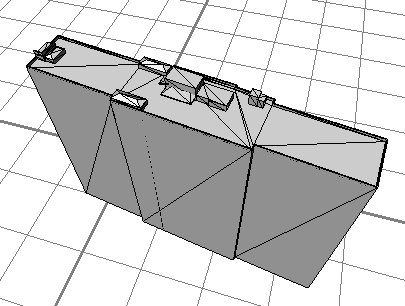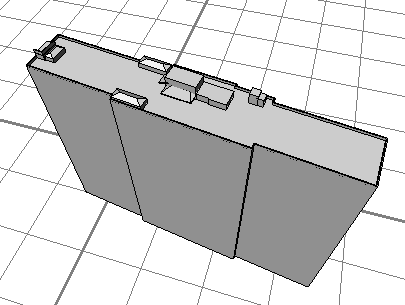Syntax
- cleanupGeometry(components, tolerance)
Parameters
- components—selectorWhat components to clean up:
- vertices—Merges vertices and removes collinear vertices.
- edges—Merges vertices and removes shared edges between coplanar faces.
- faces—Merges vertices and removes duplicate faces and degenerated faces with small area.
- all—Cleans up all components.
- tolerance—float (range[0, 1] )Controls the rigorousness of the cleanup operation.
- 0—Only cleans up matching components. Vertices must be identical, edges collinear, faces coplanar or with zero area in order to be removed.
- 1—Vertices up to a distance of 1m are merged. Edges with intermediate angles up to 10 degrees are considered collinear. Normals with intermediate angles up to 10 degrees are considered coplanar. Faces with area up to 1m² are removed.
- [0, 1]— For values in-between 0 and 1 linear interpolation is applied.
Description
The cleanupGeometry operation cleans up the current shape's geometry.
The intent of this operation is to optimize the mesh data structure of the geometry without the intent to change the appearance of the model. The polygon and vertex count may be reduced.
The cleanup can be necessary for subsequent CGA operations. For example, setNormals and softenNormals operations require duplicate vertices to be merged in order to compute vertex normals using adjacent face normals.
Note:
Because discontinuous textures coordinates are preserved cleanup steps could be disabled. In some cases it might be useful to delete the UV coordinates beforehand.
Related
Examples
Cleaning up a triangulated asset
The original asset (464 faces, 758 vertices). |  |
Mild cleanup removes most disturbing edges (190 faces, 752 vertices). |  |
Increasing the tolerance gets rid of the remaining nasty edges (146 faces, 616 vertices). |  |